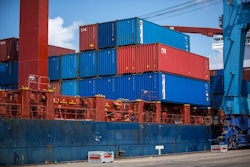
Lagging U.S. Harvest Continues
USDA’s weekly progress report showed corn harvest at 41%.
Progress advanced 11% points but remained well behind the average at 61%.
Corn condition improved for the week.
Soy harvest at 62% also remained behind average at 78%.
Cotton harvest continues to advance slightly ahead of average at 46%.
The Texas cotton crop was 36% harvested with freeze noted in the Plains and Cross Timbers, delaying harvest progress.
Winter wheat plantings were 85% complete with the initial rating at 56% good to excellent, slightly above last year.
FBN’s Take On What It Means: The lagging harvest continues to offer basis opportunities across the U.S. Generally, basis levels are higher for corn and soybeans, year-over-year. We expect this strength to continue. No major concerns are present for winter wheat. Cotton harvest is progressing nearly in line with average but the bulk of the crop is still in the fields. Cotton supplies are poised to be hefty with export demand needed, particularly from China.
Argentina and Brazil Remain Drier than Normal
For Argentina, the 10-day outlook calls for mostly cool, dry weather across major crop regions.
Rains are in the forecast for northern Santa Fe and north of there.
But, those rains will not benefit the majority of key-producing lands.
For Brazil, warm/dry remain in the forecast for the coming 10 days.
Temps are forecast to be up to five degrees Celsius; warmer than normal.
Rainfall deficits generally are expected with Rio Grande do Sul; an exception.
Rio Grande do Sul is the major rice-producing state.
Mato Grosso was 64.5 percent planted for soybeans as of October 26.
FBN’s Take On What It Means: The drier-than-normal weather will aid planting progress but moisture would be welcome. Rainfall deficits across the past 30 days are present for both countries. Given the early stage of the spring growing season, futures markets are not yet pricing in the dryness as the situation may be resolved in a timely fashion. If dryness persists, this would result in opportunities for the U.S.
The risk of trading futures, hedging, and speculating can be substantial. FBN BR LLC (NFA ID: 0508695)










